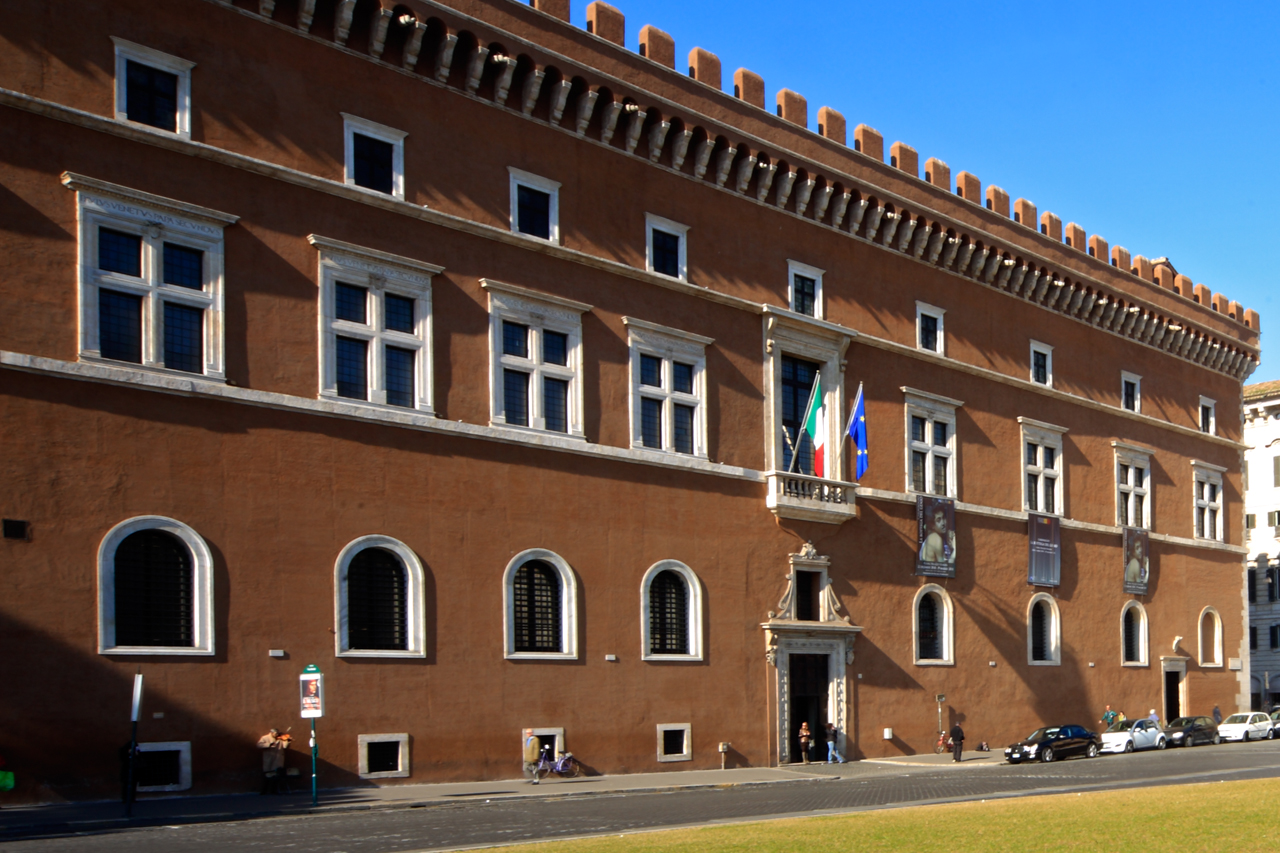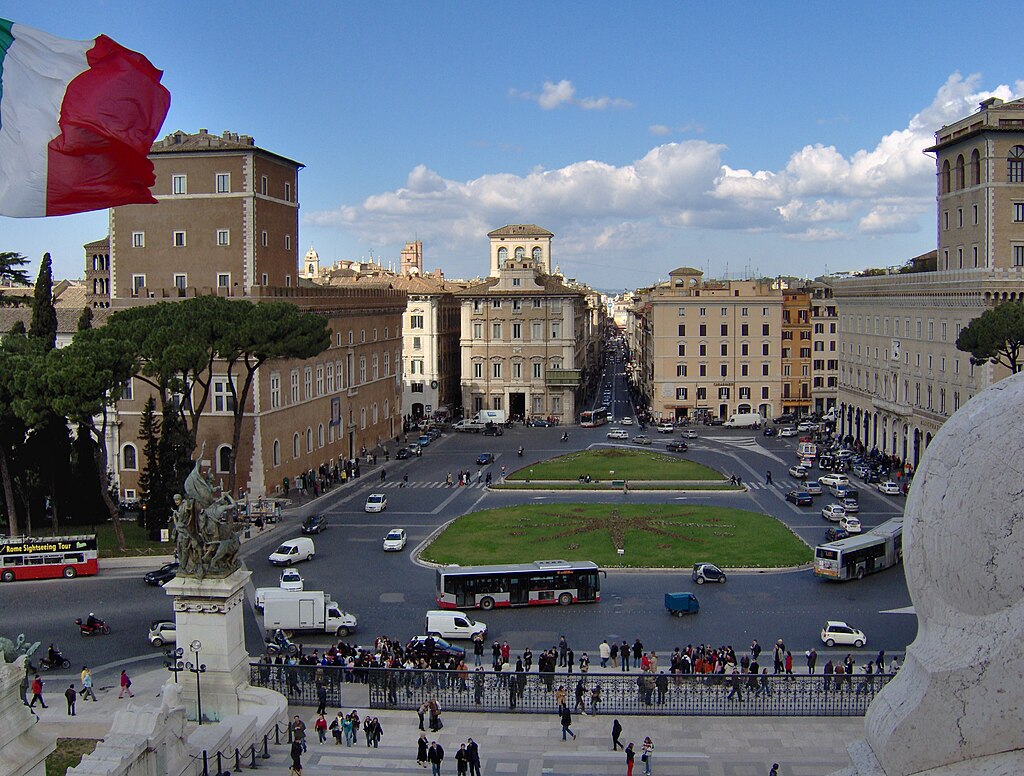Venezia Square
Venezia Square is located at the foot of the Campidoglio, where five of the most important streets of the capital intersect:
via dei Fori Imperiali, via del Corso, the axis via C. Battisti-via Nazionale, the axis via del Plebiscito-corso Vittorio and via del Teatro di Marcello.
The square is dominated by the Altar of the Fatherland.

Three monumental palaces surround it on the other sides.
The oldest is the fifteenth-century Palazzo Venezia,

which gives its name to the square and which is home to the homonymous national museum.
The other palaces are the seventeenth-century Bonaparte Building.

and the Building of Generali’s Insurence , built in the early twentieth century.

On Venezia Square there are the boundaries of three districts:
to the west of it extends the Pigna district, to the east the Trevi district and to the south the Campitelli district.
Five important streets that branch off from Venezia Square make it a fundamental node of the urban fabric.
The oldest is the central Via del Corso, which connects the square with the northern part of the capital.
The route of Via del Corso dates back to 220 BC, following that of the urban stretch of the Via Flaminia, one of the most important consular roads.
Altar of the Fatherland is also called Vittoriano…
The Vittoriano complex was built to celebrate and initially remember Vittorio Emanuele II of Savoy, the first King of Italy.
It is also considered one of the monuments, symbol of the Eternal City and the country.
The monument was built between 1885 and 1911, and in fact represents the unity of the country and “love of country”.
The Unknown Soldier( Venezia Square)
In November 1923 the body of the unknown soldier was buried in the heart of the Vittoriano, to celebrate the victims who fell in the war.
In 1935, following the intervention of the architect Armando Brasini, the homonymous area dedicated to the Central Institute for the Risorgimento and its Museum, inaugurated on May 24 of the same year, was finally designed and built.
A monument, highly symbolic, immediately thought of as a place not only to look at but also to live, with museums and exhibition spaces, where great art exhibitions are held.
During the Christmas period the square lends itself to hosting the Christmas tree.




